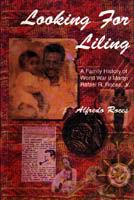GMA TOASTS OUTSTANDING PINOYS FOR SHOWCASING BEST OF FILIPINO
 MALACANANG, November 8, 2005 (OFFICE OF THE PRESS SECRETARY) ) President Gloria Macapagal-Arroyo congratulated today several outstanding indigenous groups and individuals who have made the Philippines proud by garnering recognitions and awards here and abroad.
MALACANANG, November 8, 2005 (OFFICE OF THE PRESS SECRETARY) ) President Gloria Macapagal-Arroyo congratulated today several outstanding indigenous groups and individuals who have made the Philippines proud by garnering recognitions and awards here and abroad.
The President hailed the awardees for showcasing the best of the Filipino during a special courtesy call this afternoon at the Rizal Hall of Malacanang.
"They represent the best of the Filipino and indeed there are so many that represented the best of the Filipino… We congratulate all of them. They all represent the great Filipino worker, the great Filipino. Thank you for inspiring us and may we continue to produce more of the great Filipino," the President said.
Among those present during the simple ceremonies were Trade and Industry Secretary Peter Favila, UNICEF Director Nicolas Alipui, national artists Napoleon Abueva (visual arts) and Dr. Alejandro Roces (literature), and Presidential Assistant on Culture and concurrent National Commission on Culture and the Arts (NCCA) executive director Cecile Guidote Alvarez.
Leading the awardees is the Xilworks team of the Far Eastern University (FEU) that won the Jaycees International Best Business Plans of the World contest last Oct. 28 in Vienna, Austria.
The team, composed of Ruth Michelle Ariem, Alexis Lozano, Michael Estorninos and their adviser Prof. Ramon Adviento, bested over 200 business plans from around the world with their clean technology of extracting silver from spent x-ray solution.
Other awardees are ABS-CBN news anchor Karen Davila whose feature "Batang Preso" (Juvenile Prisoners) in the investigative program "The Correspondents" bested 50 other entries from the Asia-Pacific region in winning the "UNICEF Child Rights Award" last October in Hong Kong;
GMA7 news anchor Rhea Santos and host of "At Your Service" television program for bagging the Gold Camera Award, the highest award given in the 38th US International Film and Video Festival, one of the world’s highest honors in audio visual competition held last June. The show’s "Under the Sea" episode, which taught a fishing community how to build an artificial coral reef as an alternative means of livelihood, bested 1,300 entries from 30 countries under the Community Development Genre category;
The Philipine Educational Theater Association (PETA) received last October the 2005 Japan Foundation’s Special Prize for Culture and Arts, the first for the Philippines, for its significant role in international cultural and artistic exchange and carrying out educational and community building efforts in Asia;
Ms. Malou Jacob, who was among this year’s recipients of the SEAwrite Awards, Asia’s most prestigious literary prize given by the Princess of Thailand in Bangkok last month;
Jacob’s book "Anatomy of Corruption" talks about the values and the re-thrusting necessary to fight corruption. "Juan Tamban," one of her plays about a street child who eats cockroaches to survive, received critical acclaim.
Visual artist Romulo Galicano, who bested 2,000 other painters from around the world in winning the grand prize of the 2005 International Portrait Competition hosted by the Portrait Society of America in Washington, D.C. last May 2005;
His winning entry, a 30x40 oil painting portrait of Eddie Chua, a businessman and friend, was a perfect example of temporary realism – a fusion of realist and abstract art discipline.
Christian choral group Coro Cantabile which received the Club UNESCO Citation during this year’s 7th Multi-ethnic Cultural Festival in Greece;
Shirley Halili-Cruz School of Ballet, for bagging a total of 67 awards and gold trophies in the different dance categories in the 7th Asia-Pacific Dance Competition in Singapore.
The President, who issued Presidential Proclamation No. 486 observing the whole month of October as Indigenous People’s Month, also congratulated the awardees in this year’s "Search for Outstanding Indigenous People’s Leadership (S.O.I.L.) that was given by the Management Association of the Philippines (MAP).
They are Baguio City’s Cecile Afable (education and media), Iloilo’s Romulo Caballero (arts and culture), Pangasinan’s Inocencio Carganilla (entrepreneurship/livelihood), Mountain Province’s William Claver (peace, human rights and environment), and Zamboanga’s Justino Tiban Awid (public service/community leadership).
 MALACANANG
MALACANANG



